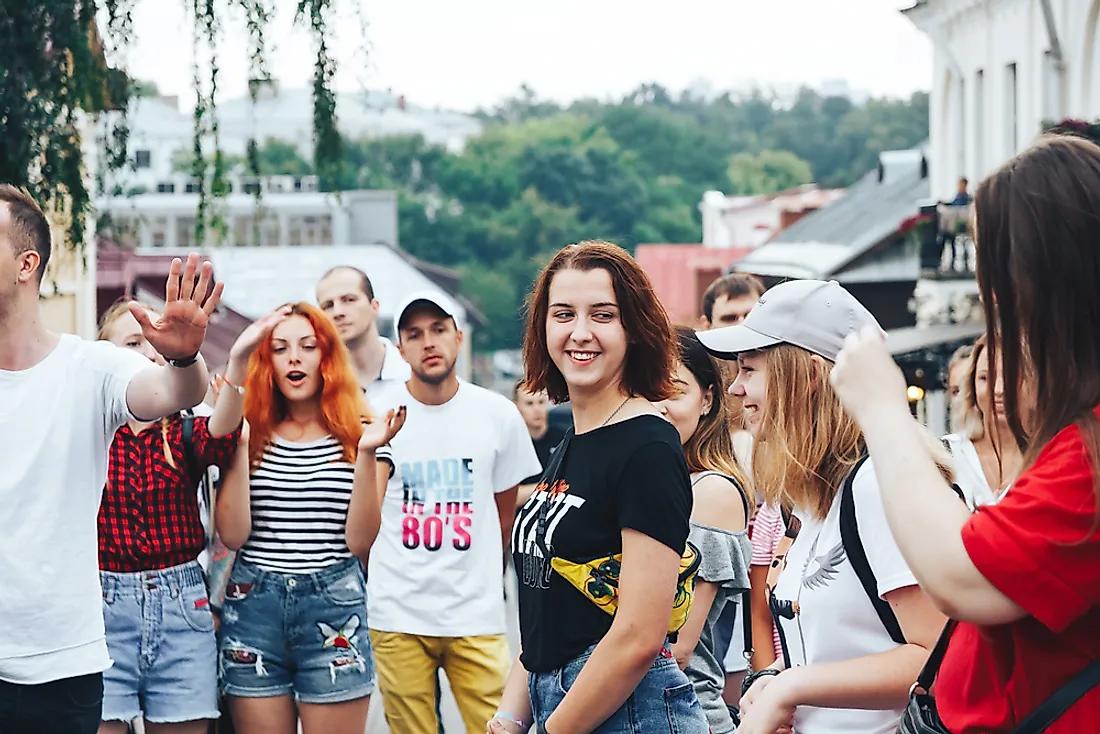What Is The Ethnic Composition Of Belarus?

Belarus is a sovereign state located in the Eastern part of Europe, sharing its land borders with Latvia, Lithuania, Poland, Ukraine, and Russia. The largest city in the country is Minsk, which is also the country's capital city. As part of the Soviet Union, it was known as the Socialist Soviet Republic of Byelorussia, and in 1922, it was among the founding constituents of the Soviet Union which was consequently named the Byelorussian Soviet Socialist Republic. Almost one-third of the Belarusian population perished during the Second World War and more than half of the economic resources were lost as well. However, the country was able to develop again in the post-war period.
Belarusians
Belarusians are an ethnic group in Belarus who belong to the East Slavic ethnic group who are believed to be the natives of modern-day Belarus and its surrounding region. Presently, there are more than 9.5 million people who claim to be of Belarusian ethnicity around the world the majority of them being in Belarus and its adjacent countries such as Poland, Ukraine, Lithuania, and Russian Federation. At the dawn of the 20th-century, Belarusians was a minority group in the regions surrounding the city of Smolensk in Russia. Large numbers of Belarusians moved to different countries in the early 20th century, particularly to the US, Canada, and Brazil. Between 1917 and 1991, during the Soviet Union era, the majority of the Belarusians were deported to different regions of the USSR and other regions such as Ukraine, Kazakhstan, and Siberia. The collapse of the USSR in 1991 many Belarusians moved to different regions like the Baltic States, Canada, the US, and the EU countries.
Russians
The figures from the Belarusian census of 2009 indicated that there were 785,000 ethnic Russians in the country which was equivalent to 8.3% of the country's total population. A decade earlier there were approximately 1.1 million ethnic Russians in Belarus implying that the population of the ethnic Russians in the country fell by 31% between 1999 and 2009. Similarly, the total population of Belarus decreased, as well, by 5% over the same period. However, the Russian ethnic in Belarus are the largest minority group in the country. The majority of Russian Belarusians are the descendants of the Russian immigrants who settled in Belarus during the Soviet era as administrative or military personnel and technical specialists.
Poles
The Polish Belarusians are a minority ethnic group in Belarus, and according to 2009 census, they were about 0.3 million people. They account for the second largest minority ethnic group in Belarus after the Russians are they represent 3.1% of the country's total population. About 180,905 Polish Belarusians are living in large agglomerations, and about 113,000 are living in relatively smaller settlements. Other estimates think that the population is much higher than this based on the previous poll, which was held in 1989 by the Soviet authorities who found that the poles in Belarus were 413,000. Most of the Polish Belarusians live in the western region of the country in the Grodno oblast including regions such as Sapotskin and its surrounding region as well as in Voranava district. The union of poles in Belarus is the largest Polish organization in the country having a membership of more than 20,000 people. The organization represents the Polish minority in the country which, according to the officials says they are more than 400,000.
Jews
The Jewish ethnic group in Belarus is the third largest minority in the country, particularly in the first half of the 20th century. Before the Second World War, the population of Jews dropped from about 900,000 to about 325,000 as a result of mass migrations. However, even with the mass migration, Jews were still the third largest ethnic group in the country accounting for more than 40% of the population in major cities and towns. In other cities such as Homiel, Viciebsk, Babrujsk, Mahiliou, Pinsk, and Minsk, They accounted for almost 50% of the population. The population of the Jews in Belarus between 1926 and 1939 was approximately 375,000 to 407,000, representing about 6.7% to 8.2% of the country's total population. However, about 246,000 Jews or about 66% of the Jewish population in Belarus perished in the Holocaust. The census of 2009 indicated that there were 12,926 people who identified themselves as Jews in Belarus. The Jewish agency in the country estimates that there are about 20,000 Jews in the country.
Armenians
The ethnic Armenians living in Belarus numbered 8,512 according to 2009 census, living mainly in the city of Minsk. In the 20th century, the Armenian settlements in the country were episodic, and in the 1980s the population of Armenians in the country began to increase. According to the 1989 census, the Armenians in Belarus were 4,933 which represented about 0.04% of the country's population. Within a decade later, the population of Armenian had increased to 10,191, representing about 0.1% of the total population in Belarus. Many Armenians took part when the Soviet Union was established, and they fought for the Soviet Union during the 1941-1945 conflict. Several streets in the city of Minsk are named after the Armenian soldiers. Unlike the Armenians in other countries, the Armenian community in Belarus is perceived to be allied to the Russians. Armenians in other countries such as Moldova, Ukraine, and Kazakhstan are perceived to be allied to the Titulars and hostile towards the Russians.











